Ricardo Jorge was a distinguished doctor, epidemiologist, researcher, hygienist, and humanist, who, at the end of the 19th and early 20th centuries, divulged the latest techniques of that time and the first notions of Public Health in Portugal.
His full name was Ricardo de Almeida Jorge. He was born in Porto on 9 May 1858 and died in Lisbon on 29 July 1939. Of humble origin, his father was a blacksmith on Rua do Almada, in that city. At the age of eight, he entered Colégio da Lapa (the building has gone), where he was a disciple of writer Ramalho Ortigão in the French subject and of Manuel Rodrigues da Silva Pinto in the Portuguese class. Later he attended Liceu de Santa Catarina, becoming friends with Júlio de Matos.
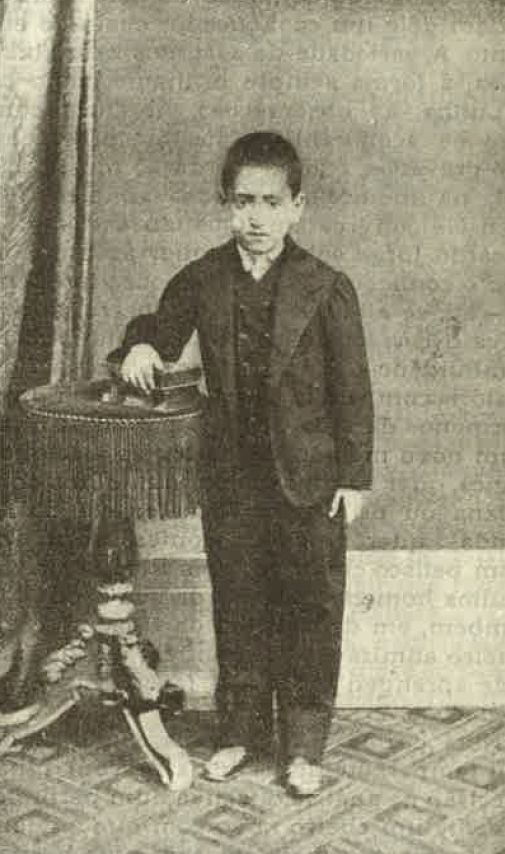
Fig.1 - Ricardo Jorge in the year when he took his first exam.
In 1874, at the age of sixteen, he enrolled in the medical degree at the Medical-Surgical School of Porto. During his academic career, between 1874 and 1879, he distinguished himself as an outstanding student, winning several academic awards.
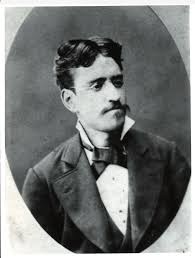
Fig.2 - Ricardo Jorge, year 5 student at the Medical-Surgical School of Porto (1879). Museum of History of Medicine “Maximiano Lemos” of the Faculty of Medicine of Porto
In 1879, he completed his training at the age of twenty-one, with the presentation of the “inaugural dissertation”, the final degree dissertation, entitled “An essay on nervousness”. In this work, Ricardo Jorge exposed the history of Neurology, a subject that at the time was still not widespread.
In the following year, he started his professional activity as a clinician, but also as a Professor at the Medical-Surgical School of Porto after winning a place in the Surgical Section of that school with the presentation of the work “Localizações Motrizes no Cérebro” (Motor Locations in the Brain). Here he taught Anatomy, Histology and Experimental Physiology.
Ricardo Jorge married Leonor Maria dos Santos. The couple had four children - Artur, Ricardo, Leonor and Alice. He is also the paternal great-grandfather of João Maria Centeno Gorjão Jorge, the well-known musician and composer Rão Kyao.
In 1881 he founded, in collaboration with Professor Augusto Henrique de Almeida Brandão, the Hydrotherapeutic and Electrotherapeutic Institute at Grande Hotel do Porto, putting into practice the studies he had already conducted in the treatment of diseases of the nervous system through electricity and gymnastics, hydrotherapy and ignipuncture.
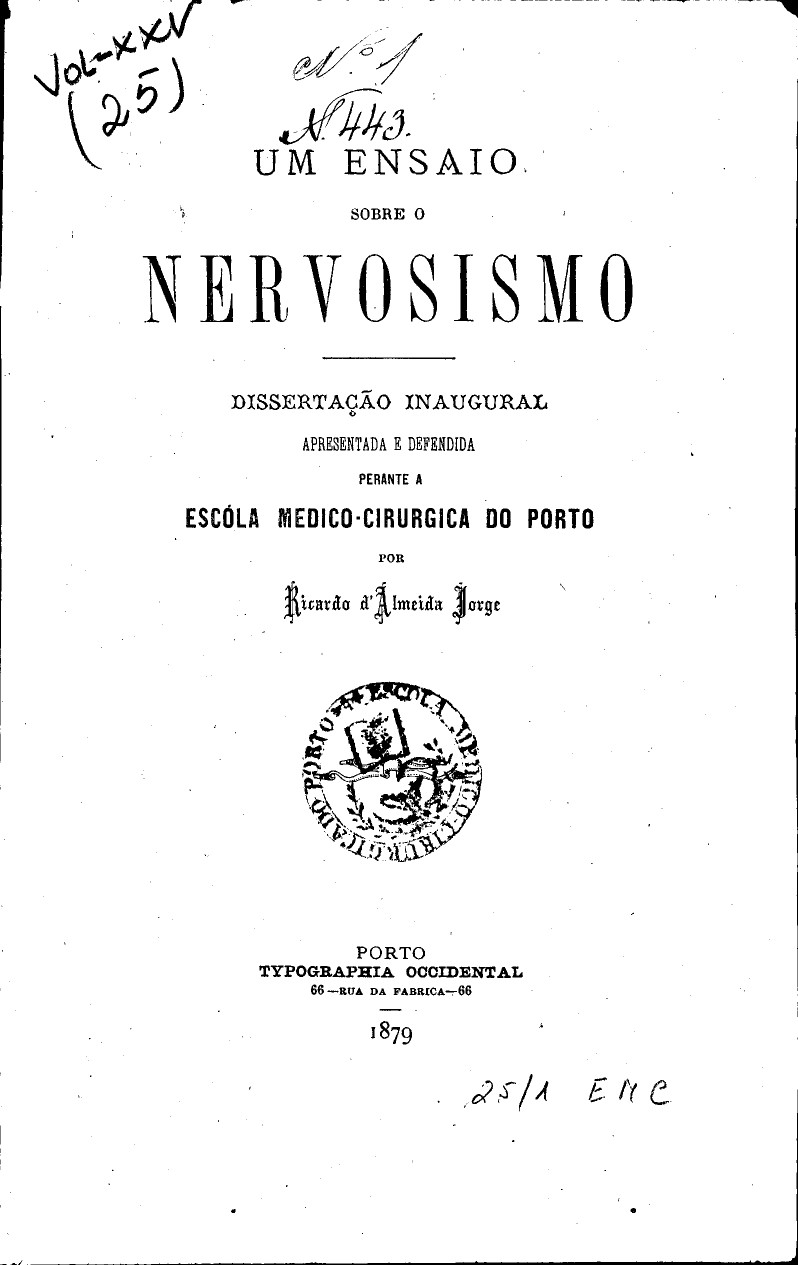
Fig.3 – Ricardo Jorge with Leonor Maria dos Santo
Some newspapers of the time published advertisements about consultations of "nervous diseases" given by the clinician Ricardo Jorge, which made him very popular. Camilo Castelo Branco resorted to him due to his illness, blindness, which led to a great friendship between them that lasted many years.
As the teaching of neurology was very incipient in our country, in 1883 Ricardo Jorge started several trips to Strasbourg, where he visited the Pathological Anatomy laboratories of Recklinghausen and Waldeyer, and later to Paris, where he visited hospitals and gained knowledge and became familiar with practices unknown in Portugal. In this city, he also attended the classes of Jean-Martin Charcot, a French doctor and scientist, who achieved enormous fame in the field of psychiatry and neurology in the late 19th century.
The new knowledge that he brought from these trips made him, upon his return to Portugal, found the first Microscopy and Physiology Laboratory in Porto, and create the Anatomy of Nervous Centres course.
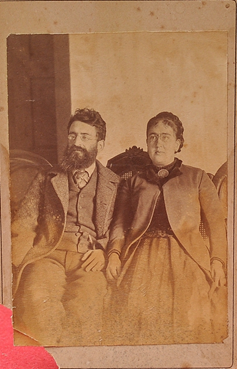
Fig.4 - Ricardo Jorge with Leonor Maria dos Santos
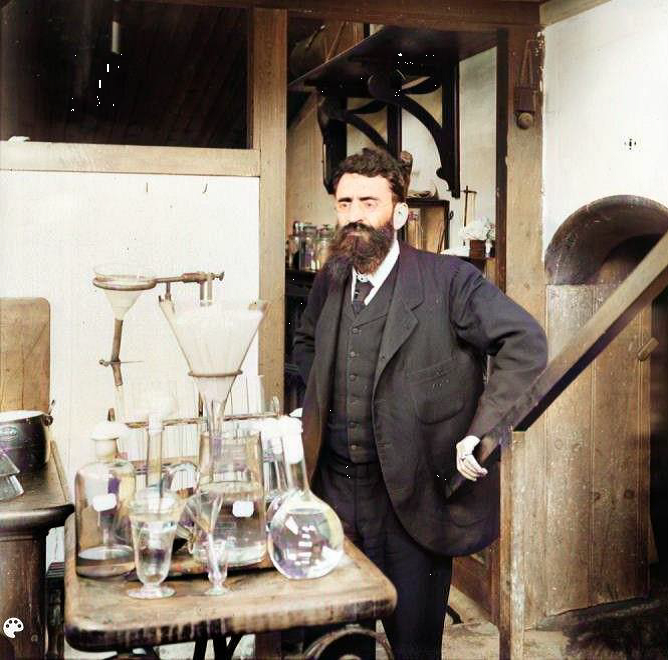
Fig.5 - Ricardo Jorge at the Municipal Laboratory of, 1899. Portuguese Photography Centre Aurélio da Paz dos Reis. (PT-CPF-APR-001-001-002932). Image coloured in MyHeritage In Color.
After participating in a discussion at Sociedade União Médica (Medical Union Society) about the location of cemeteries in Porto, Ricardo Jorge organized, in 1884, four conferences with the following titles: “Hygiene in Portugal”, “The Evolution of Graves”, “Burial and Cemeteries” and “Cremation”, which led him to move away from Neurology and dedicate himself entirely to Public Health and sanitary conditions. In these conferences, he sought to demonstrate that cemeteries did not present any risk to public health, either in terms of air, soil or water. These conferences, which earned him huge fame and prestige, were published in the book “A Higiene Social Aplicada à Nação Portuguesa” (Social Hygiene Applied to the Portuguese Nation) in the following year. In this widely disseminated work, Ricardo Jorge concluded that the existing sanitary conditions were absolutely deplorable and that an urgent intervention by the State was necessary for the implementation of a sanitation system. The proposals he presented contributed to him becoming one of the most prestigious hygienists. Since then, he had great influence on health policies in Portugal.
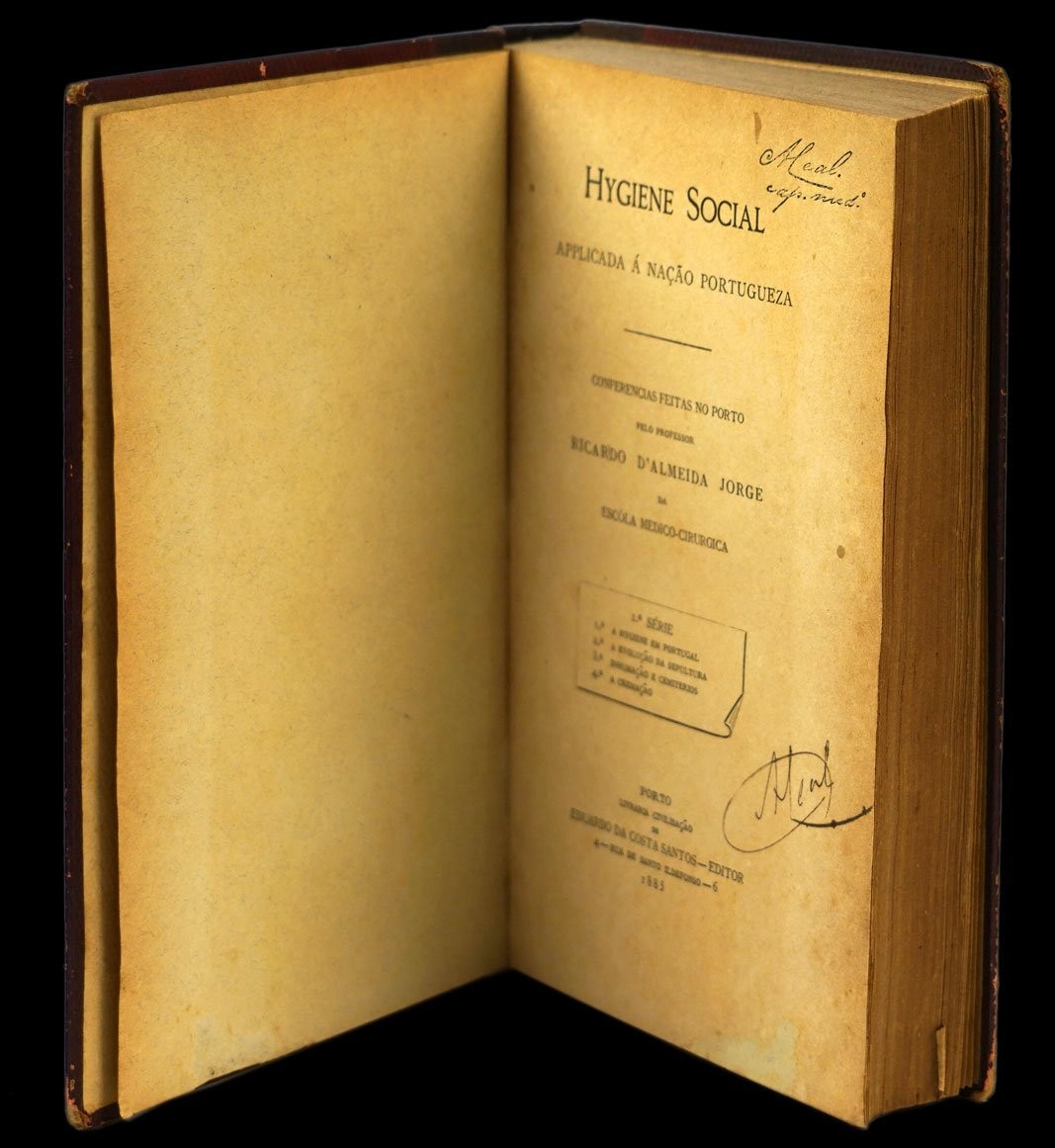
Ricardo Jorge, who had a restless and critical spirit, manifested in the early years of his career his disagreement with the teaching, research and medicine practiced at that time in Portugal. A few years later, he became a singular figure in these areas of science in our country. In 1885, at the age of 27, he presented a report to the Superior Public Council comparing the medical education practiced in Portugal with that of other countries, as he had witnessed on the trips made years earlier. This report became a framework for the General Health Regulation, published in 1901.
In addition to dedicating himself for years to the study of Neurology, he also studied hydrotherapy. He published several works where he demonstrated the results of the various experiments he carried out on the effects of alkaline fluorides and on thermal waters, especially with regard to the waters of Caldas do Gerês.
In 1886, the renowned chemist Adolfo de Sousa Reis, aware of Ricardo Jorge's interest in hydrology and thermalism, asked him to make a report on the waters of Caldas do Gerês. The conclusions were so positive that Ricardo Jorge, together with his colleague Marcelino Dias, Adolfo de Sousa Reis and the capitalist Manuel Joaquim Gomes, decided to request the concession of the spa. The request was accepted and, in 1888, the Government of the time awarded them an exploration contract for a period of fifty years. Between 1889 and 1892, Ricardo Jorge worked as clinical director of Companhia das Caldas do Gerês, which unfortunately went bankrupt in 1893.

Fig.7 - Apprearance of Caldas do Gerês in 1891. Source: Jorge, Ricardo Caldas do Gerês. Guia Terminal. Porto: Tip da Casa editora Alcino Aranha; 1891, [s.p.].
All these events helped Ricardo Jorge to be invited by the Porto City Council to be part of a study on the sanitary conditions of Porto, resulting in a report “O Saneamento do Porto” (The Sanitation of Porto) published in 1888. This report led to Ricardo Jorge being invited again in 1892 by the same City Council to head the Municipal Health and Hygiene Services of the City of Porto and the Municipal Laboratory of Bacteriology. As the head of these two institutions, he had the opportunity to publish the Yearbook and the Monthly Bulletin of Sanitary Statistics in Porto, which contributed to Ricardo Jorge being nicknamed as the pioneer of modern demographic statistics in Portugal.
In 1895, he was appointed professor of Hygiene and Forensic Medicine at the Medical-Surgical School of Porto.
In 1899, he published the work “Demography and Hygiene of the City of Porto”. In this publication, the author combined the history of the City with that of the “islands” as the cause of the spread of pests and other diseases, giving greater importance to tuberculosis, accompanied by statistical data. This work was a basis for other similar works and is still considered a reference work for those who intend to study the beginnings of the city. The health and living conditions in Porto led him to describe it as a “cemetery city”. This work was so important that, in that same year, Queen D. Amélia founded the National Assistance to Patients with Tuberculosis (organization the hygienist was part of) and led to the creation of several sanatoriums.
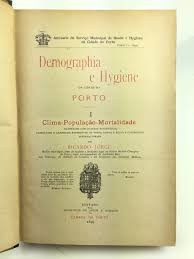
Fig.8 – Demography and Hygiene in the city of Porto, 1899
Between June and September 1899, the city of Porto was afflicted by bubonic plague. It was Ricardo Jorge who diagnosed and announced this epidemic to the competent authorities after requesting the cooperation of foreign and national specialists, such as Câmara Pestana, who only confirmed his premonition. At this time, Ricardo Jorge published a report entitled “The Bubonic Plague in Porto”, explaining the discovery and his preference (which he knew well as the disease spread and the groups that were most affected) for the prophylactic measures taken to eliminate the epidemic, despite the use of the most modern application at the time, which had been developed by the Swiss physician Alexandre Émile Jean Yersin, the Yersin serum.
The rules adopted were the evacuation and disinfection of houses where plague had occurred, isolation of patients, mandatory personal hygiene with the construction of public bathhouses, the fight against disease-transmitting agents (mice, cats and fleas), prohibition of recreational trains, fairs and pilgrimages and other events where there could be gatherings, and especially the strict cordon sanitaire imposed by the Government.
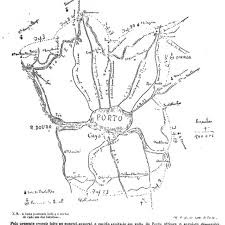
Fig. 9 – The cordon sanitaire, Porto
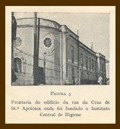
Fig.10 – Building on Rua de Cruz de St.ª Apolónia where the Central Hygiene Institute was founded (1902)
Interestingly, in the fight against this epidemic, children also participated. They earned a significant amount by delivering the mice they hunted to the police stations. For each large rat they received 2 cents and for each smaller rodent, 1 cent.
These rules made Ricardo Jorge well-known as an epidemiologist both nationally and internationally. However, they caused a huge revolt in the population who, encouraged by political groups, provoked situations of authentic civil war, stoning of doctors' houses and bomb explosions. This forced Ricardo Jorge to leave the city and move to Lisbon.
Regardless of having had the support of doctors in the city of Porto, Ricardo Jorge moved to the capital. He requested his transfer to the Medical-Surgical School of Lisbon and was hired as full professor of Hygiene who, meanwhile, had left the Forensic subject and been appointed Inspector General of the Kingdom's Health Services and member of the Superior Council of Hygiene and Health.
In addition to these occupations, he was also a researcher and mentor of new legislation that led to a deep reform in public health in Portugal, inspired by the English model and the creation of the Directorate-General for Health and Public Beneficence.
Although Ricardo Jorge had proposed the creation of an Institute so that all citizens could enjoy public health through education, training and research, it was only on 28 December 1899 that the Central Institute of Hygiene was founded to combat the bubonic plague outbreak that spread that year in Porto.
In 1929, this institute was renamed the Central Hygiene Institute Dr Ricardo Jorge, in his honour. The institute offered courses in Sanitary Medicine and Sanitary Engineering, which enabled the practice of doctors and sanitary engineers and gave them the possibility to carry out the position of health delegate or perform functions such as hygiene, industrial supervision and worker and agricultural work or child hygiene. In 1945, after a reorganization of the Social Welfare Services, it was renamed Hygiene Higher Institute.
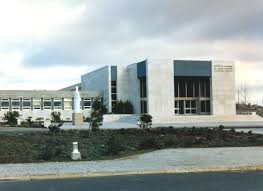
Fig.11 – National Institute of Health Dr Ricardo Jorge

Fig. 12 – Ricardo Jorge in Almanaque Ilustrado do Século, 1900
In order to honour its founder, this Institute annually awards the best Portuguese research work in the field of Public Health, the Ricardo Jorge Prize in the amount of 25 thousand euros.
He collaborated in the reform of medical education in 191,1 and later in 1926, he was assigned to reform his 1901 Public Health Regulations.
Between 1914 and 1915, he directed the Society of Medical Sciences of Lisbon, as its 32nd president. In 1929, he was appointed President of the Hygiene Higher Technical Council.
Ricardo Jorge was at the forefront of the organization in the fight against the 1918 pandemic, known as Spanish Flu, and also against the typhus, diphtheria and smallpox epidemics (worrying about the social aspect by raising donations for victims and their families), which emerged after World War I due to the lack of sanitary conditions.
In 1927, as Director-General of Health, Ricardo Jorge was responsible for the prohibition of Coca-Cola in Portugal, after receiving information about the slogan on the drink created by Fernando Pessoa “At first it feels strange, then you cannot have enough of it”. This drink only started to be officially consumed in Portugal on 4 July 1977.

Fig.13 – Coca-Cola Ad
Throughout his vast career, he participated in several international congresses, such as the 15th International Congress of Medicine in 1906, which took place in Lisbon (it had major impact), where he chaired the Section on Hygiene and Epidemiology. In 1912, he started to represent Portugal in the “Office International d’ Hygiene Publique” in Paris, where he distinguished himself. On his own merit, he was appointed to represent Portugal in the Hygiene Committee of the Society of Nations. In April 1918, in Paris, he participated in the Allied Countries Health Commission.
He obtained the honourable distinction of Honorary Fellow of the Royal Society of Medicine.
For several years he made numerous study trips abroad, such as health training in France in war zones, which he called his “health tours”.
Throughout his life, he had intense and tireless activity. Even three months before he passed away, he spoke at a meeting of the Hygiene International Office.
Ricardo Jorge left extensive work, some of which were only published posthumously. A cultured man and a bibliophile, he expressed in his writing, with literary characteristics, his opinions in an assertive way, which brought him some discomfort several times. But his writings were also much admired for the rigour and historical background of the diseases or themes he was describing, with statistics, citation from authors, and other elements that are fundamental for contextualization.
His works, more than sixty, reveal his multifaceted personality. Most of them are dedicated to Hygiene and Epidemiology, General Medicine and Demography, but also to History, biographies of renowned figures in the field of arts, literature and medicine (Ribeiro Sanches, Gil Vicente, Amato Lusitano, and El Greco, among others), essays and travel chronicles.
The Institute for Superior Culture published part of his work in 1926.
In 1985, a large part of its erudite and immense library was donated to the Society of Medical Sciences of Lisbon.
He wrote assiduously for several magazines, such as, from 1882, “Revista Cientifica”, which he co-founded, where he exposed his positivist and experimentalist principles, “Clínica, Higiene e Hidrologia”, “A Medicina Contemporânea”, “Lisboa Médica” and “Lusitânia”. He started publishing the “Arquivos do Instituto Central de Higiene” and the statistical series “Movimento Fisiológico da População”.
He also published in several foreign magazines, such as “Bulletin Mensuel de l’Office International d’Hygiène Publique”.
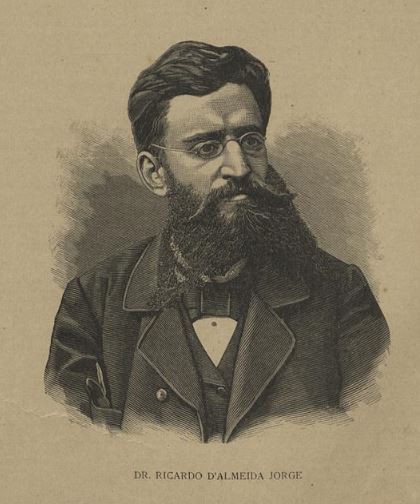
Fig. 14 – Ricardo Jorge

Fig. 15 - Ricardo Jorge, caricature
Portugal has paid tribute to Ricardo Jorge, to whom it owes a lot, in particular the public health organization which has earned him an international reputation. His name has been given to many streets across the country. In 1950, the Lisbon City Council named a street in the Alvalade area after him.
Ricardo Jorge was an illustrious Professor, Researcher and Humanist. He was a colleague, among many others, of Maximiano Lemos and a doctor and friend of Camilo Castelo Branco, who in his work “Serões de S. Miguel de Seide”, wrote:
“Ricardo Jorge's style exceeds everything that is known in parliamentary oratory, academic dialectics, civic eloquence in clubs and even pulpit oratory…”
References:
ALMEIDA, Maria Antónia (2011). Biografias de Cientistas e Engenheiros Portugueses. Available at https://www.researchgate.net/publication/277196167_Ricardo_Jorge [Retrieved on 11-01-2021]
ALMEIDA, Maria Antónia Pires (2019). Combatendo epidemias. Available at https://repositorio.iscte-iul.pt/bitstream/10071/12242/5/Biografias_medicos_MAPAlmeida.pdf [Retrieved on 11-11-01-2021]
Antigos estudantes ilustres da Universidade do Porto. Available at https://sigarra.up.pt/up/pt/web_base.gera_pagina?p_pagina=antigos%20estudantes%20ilustres%20-%20ricardo%20jorge [Retrieved on 11-01-2021]
Dicionário de médicos portugueses. Available at https://medicosportugueses.blogs.sapo.pt/ [Retrieved on 11-01-2021]
FERRAZ, Amélia Ricon (2008). Ricardo de Almeida Jorge. Available at http://www.scielo.mec.pt/scielo.php?script=sci_arttext&pid=S0871-34132008000200009 [Retrieved on 11-01-2021]
Gripe pneumónica, a pandemia de 1918-1919. Available at https://ensina.rtp.pt/artigo/gripe-pneumonica-pandemia-1918-1919/ [Retrieved on 12-01-2021]
Instituto Nacional de Saúde de Saúde Dr. Ricardo Jorge. Available at http://www2.insa.pt/sites/INSA/Portugues/Biblioteca [Retrieved on 11-01-2021]
“Ricardo Jorge” (1940) e “Câmara Pestana” (1900). Available at https://www.josepocas.com/2016/11/ricardo-jorge-1940-camara-pestana-1900/ [Retrieved on 11-01-2021].
Lurdes Barata
Library and Information Area
Editorial Team


